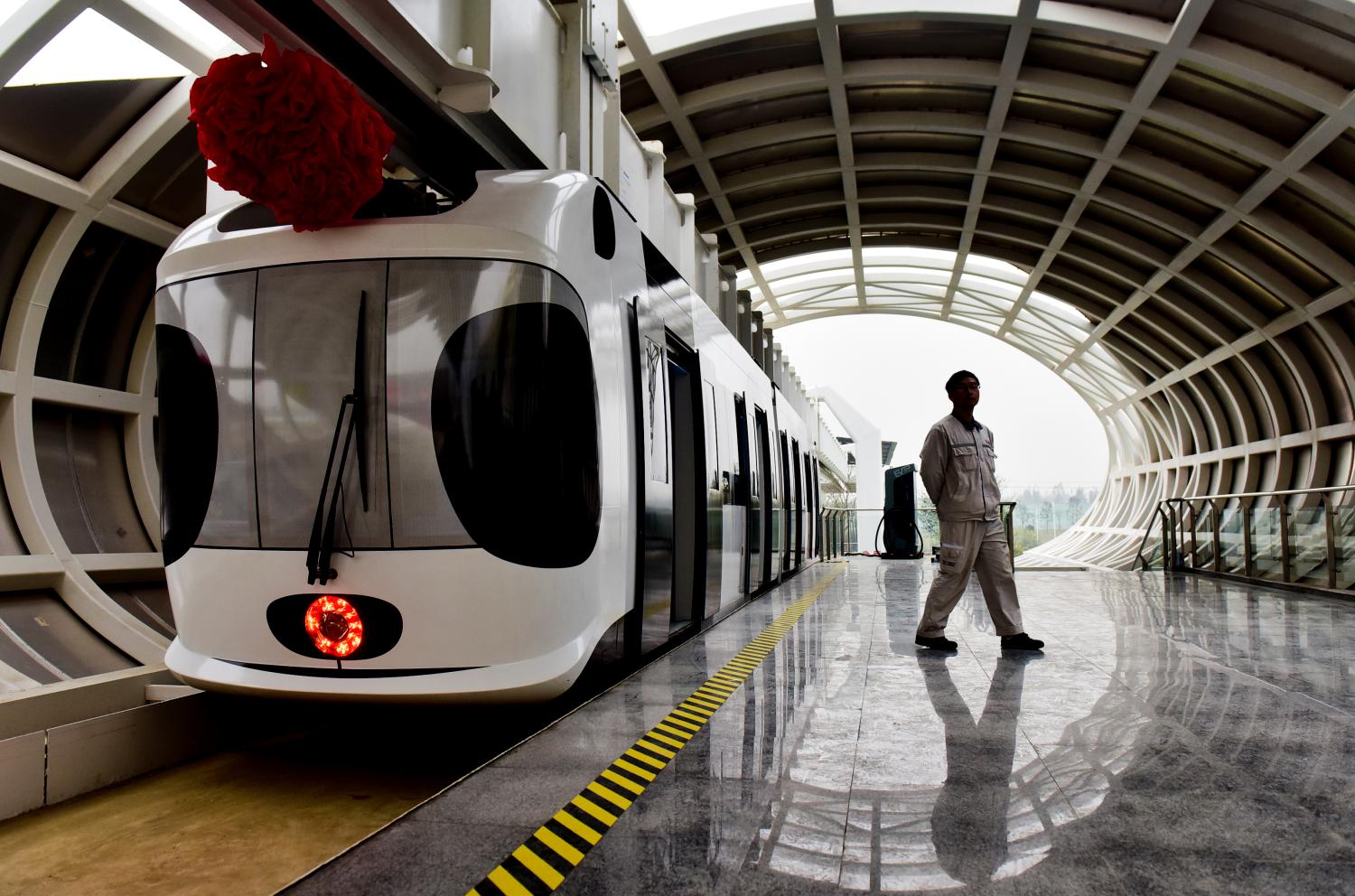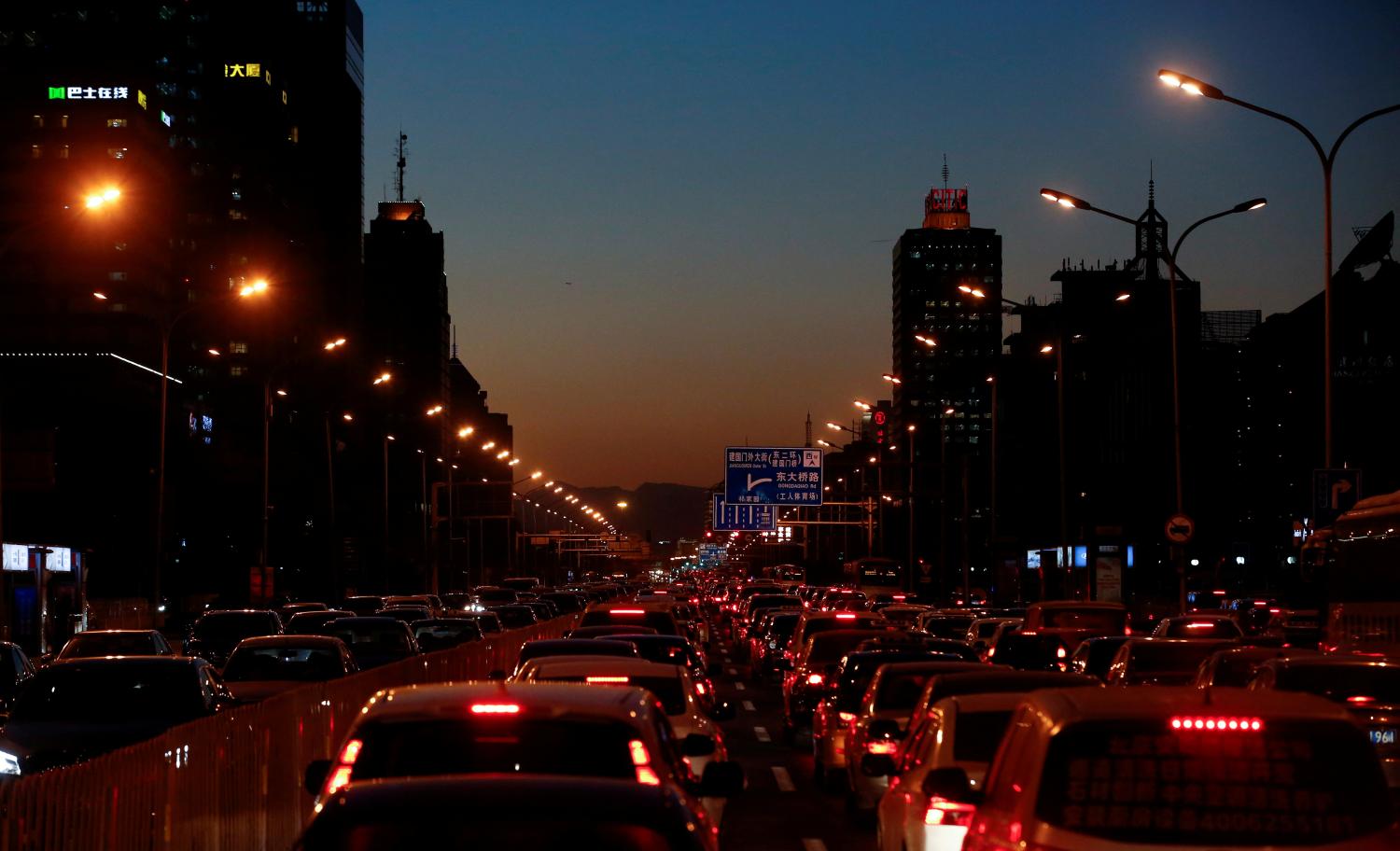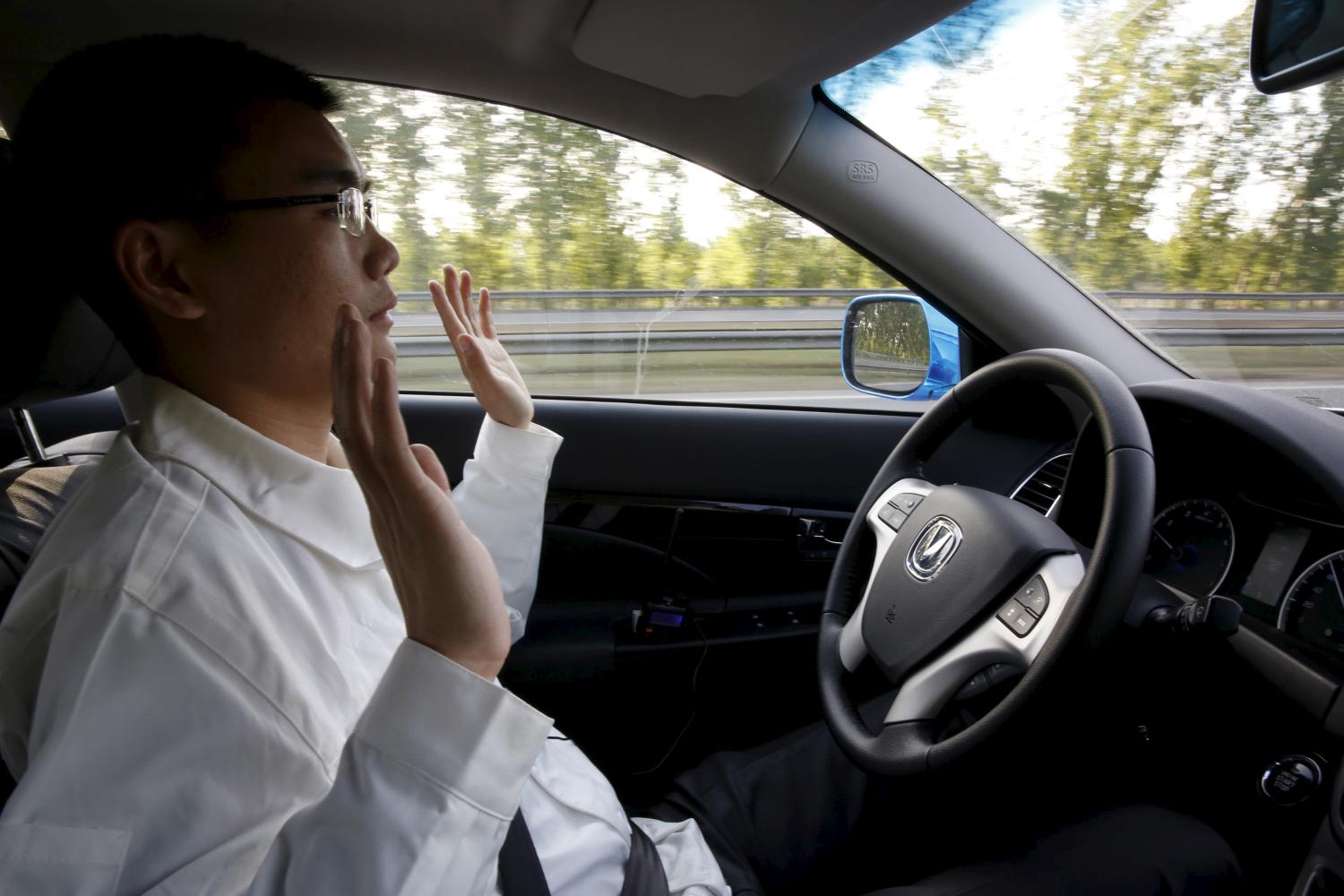Content from the Brookings-Tsinghua Public Policy Center is now archived. Since October 1, 2020, Brookings has maintained a limited partnership with Tsinghua University School of Public Policy and Management that is intended to facilitate jointly organized dialogues, meetings, and/or events.
Energy is a major challenge in China and many other places around the world. Between an aging population and its economic development needs, China faces difficulty in managing its energy resources while also promoting air quality and long-term growth. The country’s population is growing rapidly, and this has major consequences for budget allocations and investment decisions.
In this paper, we look at the ability of technology innovation to improve energy management in China. We review demographic and economic trends, and the implications of these patterns for energy consumption and natural resources. In addition, we examine smart grids, smart meters, renewable energy, emerging technologies, and China’s Internet Plus as possible ways to manage the country’s energy future. We close by making several recommendations for moving forward. It is important to make progress in infrastructure development, connecting the energy grid, stimulating interconnectivity, improving rural digital access, and integrating digital services into the overall economy.
An Aging Population
The Chinese population is expected to age rapidly between now and 2050. While the current percentage of people over the age of 65 years old runs around 10 percent, that number will rise to over 33 percent by 2050 (see Figure 1).1 This dramatic increase will put enormous pressure on social service budgets as well as resource allocations. It will require directing substantial funding into health care and income maintenance, and will affect planning decisions in many different ways. Overall, the shift demonstrates the importance of managing energy consumption efficiently so the society has the funds to address pressing human service needs.
Economic Growth Slowdown
Economic growth remains an important priority for the country. With its population expected to reach 1.4 billion by 2028, it is vital that China continues to grow its economy in order to provide jobs and maintain economic prosperity.2
Finding the proper balance between economic growth and environmental quality, though, is difficult. Proposed climate change rules are controversial at provincial levels.3 Industry officials fear that overly stringent regulations will slow the opportunities for growth. Along with government leaders, they are trying to figure out ways to promote both goals at the same time.
These challenges are pressing because there has been a noticeable slowdown in Gross Domestic Product growth in recent years. As shown in Figure 2, the annual growth has dropped from 7.6 percent in January, 2014 to 6.7 percent in each of the last three quarters.4 This has put pressure on job creation and government finances. If that growth reduction continues, it poses considerable pressures on political leaders.
The Need for Energy
Even though the economy has slowed down, energy consumption continues to rise.
These societal trends have important ramifications for energy usage. Even though the economy has slowed down, energy consumption continues to rise. Figure 3 shows the total energy used per person over the last few decades. The numbers demonstrate the high level of energy required for economic development. Even at reduced rates, the rising growth in energy needs necessitates access to energy and raw materials for manufacturing and production.5
Figures for 2016 show the kind of energy that is needed. According to the Xinhua news agency, the country will need 550 million tons of crude oil, 205 cubic meters of natural gas, and 3.96 billion tons of coal to sustain its current economic activities.6 What China does in the energy area will have important consequences for global markets.
Air Quality Measurements
Environmental protection is a top priority for Chinese leaders. Figure 4 shows air quality data for small particulate matter measured (PM2.5) on an hourly basis from January to September, 2016.7 With levels above 150 micrograms per cubic meter considered unhealthy, these data demonstrate there often are 200 days a year with unhealthy air quality in the capitol city.
Figure 4: Particulate Matter Readings for Beijing, 2016
Unsafe readings have deadly public health consequences. As a sign of the health risks, an estimated 350,000 to 500,000 Chinese die early each year due to air pollution.8 Public opinion surveys show that improving air quality is an important priority in China.9 A Pew Research Center study found that 76 percent of Chinese residents believe air pollution is a big problem.10
Focusing on Renewable Energy
To deal with environmental issues, Chinese planners have invested substantially in renewable energy. Authorities in the National Energy Administration have announced plans to spend over $360 billion by 2020 on alternative sources.11 Its government already has promulgated the goal of 15 percent of its energy coming from non-fossil sources by 2020.12 It did this by enacting the Renewable Energy Law in 2005. Leaders “levied a fee on all electricity use and allocated those funds to develop new renewable energy projects.” In 2009, it also “require[d] grid operators to purchase all the electricity produced from renewable sources.”13
Both of these actions have spurred investment in renewable energy. One source is hydroelectric power as China is the largest producer of this in the world. It also has invested in wind power and solar energy, and has become a global leader in each of those areas. The country has been far-sighted in recognizing the importance of relying less on coal and moving more towards renewable energy. Overall, officials expect this investment to create over 13 million new jobs.14
Smart Grids
Connecting the power grid is a strategy that helps countries deal more efficiently with energy. It allows power from a variety of different regions and sources to be connected and allocated towards the most efficient use.
Smart grids improve efficiency by using technology to optimize production and distribution. Through a combination of distributed resources, interactive technologies, renewable energy, two-way communications, and dynamic utilization, they provide businesses and consumers with information that allows them to alter their consumption based on supply, demand, and pricing. That improves the reliability and flexibility of energy use.
Eventually, the goal is to move electrical power across national borders.
Leaders in China have envisioned a global electricity network by 2050 that will help it deal with air quality and climate change. Dubbed the “Global Energy Interconnection”, this initiative proposes to connect the North, East, and Central grids in China and transfer power over long distances.15 It would be constructed on “a global ultra high voltage grid” and would connect wind and solar farms with other energy sources. Eventually, the goal is to move electrical power across national borders.
Smart Garbage Bins, Smart Meters, and Resource Management
Smart city initiatives are using sensors and digital devices to manage urban service delivery and help people deal with the inconveniences of daily life. In every city, garbage collection is a high priority, but current systems are inefficient. Garbage trucks have fixed pickup schedules regardless of whether garbage bins are full or not. Through sensors, digital devices can notify garbage services when a bin is full and needs to be emptied. That allows drivers to allocate them pickup schedules most efficiently and best serve their urban customers.
With the sharp increase in urbanization that is taking place in China (see Figure 5), the need for digital solutions has risen. For example, the percent urbanization has gone from 13 percent in 1953 to a projected 60 percent in 2030.16 In this situation, it is important to manage natural resources efficiently and deal with the environmental challenges of large metropolitan areas.
Sensors also are useful in water management. For example, they help in identifying and managing leaks in water lines. Some studies have estimated that communities in the United States “can be losing as much [as] 30% of their product along the way to leaks in the distribution system.”17 To help with this, sensors and advanced metering infrastructure can be installed in treatment plants and underground pipes and help managers see when leaks take place and how much water is being lost before it reaches the end-user. In cities, with aging infrastructure, this represents a way that officials can monitor leaks and manage water in real time.18
Smart meters allow people to know how they are using water and where they might be able to economize given their usage levels. In California, for example, “metering, when coupled with effective pricing structures, reduces water use by 15% to 20%.”19 Miami-Dade County is another place that has garnered positive results from advanced water meters. It is a large area encompassing 263 different parks. Overall, these recreational areas use 360 million gallons of water each year and costs $4 million in sewer and water expenditures. After installing a smart city system, the parks service was able “to remotely monitor water consumption, detect leaks and share information colleagues at other parks and facilities…. The parks department estimates a 20% reduction in water use annually with a savings of some $860,000 per year.”20
Traffic Congestion and Autonomous Vehicles
Traffic congestion is a problem in virtually every large metropolitan area.21 There are “35 cities in China have more than one million cars on the road; 10 cities have more than two million. In the country’s busiest urban areas, about 75% of all roads suffer rush-hour congestion.” The number of private vehicles in China as a whole has risen to 126 million, which is up 15 percent over the preceding year.22 The city of Beijing alone has 5.6 million vehicles in operation.23
Research by Donald Shoup has found that up to 30 percent of the traffic in metropolitan areas is due to drivers circling business districts in order to find a near-by parking space.24 That represents a major source of traffic congestion, air pollution, and environmental degradation. Cars are thought to be responsible for “approximately 30% of the carbon dioxide (CO2) emissions behind climate change.”25
In addition, it is estimated that anywhere from 23 to 45 percent of metropolitan traffic congestion occurs around traffic intersections.26 Traffic lights and stop signs are inefficient because they are static devices that do not take traffic flows into account. Lights are pre-programmed to remain green or red for set intervals, regardless of how much traffic is coming from particular directions.
Once autonomous vehicles are phased in and represent a large part of the traffic, car-mounted sensors will be able to operate in conjunction with an Intelligent Traffic System to optimize intersection traffic flow. Time intervals for green or red lights will be dynamic and vary in real-time, depending on the amount traffic flowing along certain streets. That will ease congestion by improving the efficiency of vehicular flows.
According to a RAND study, “AV [autonomous vehicle] technology can improve fuel economy, improving it by 4-10 percent by accelerating and decelerating more smoothly than a human driver.”27 Since smog in industrial areas is linked to the number of vehicles, having more autonomous cars is likely to reduce air pollution. A 2016 research study estimated that “pollution levels inside cars at red lights or in traffic jams are up to 40 percent higher than when traffic is moving.”28
A shared autonomous vehicle system also offers benefits in terms of emissions and energy. Researchers at the University of Texas at Austin examined pollutants such as sulfur dioxide, carbon monoxide, oxides of nitrogen, volatile organic compounds, greenhouse gas, and particulate matter with small diameters. Their findings show “beneficial energy use and emissions outcomes for all emissions species when shifting to a system of SAVs”.29
Internet Plus and Lessons for the Future
The biggest challenge in China and elsewhere is the need to develop a sustainable future. There are a variety of measures that would help achieve this goal. One key is infrastructure investment. It is important that China build its digital infrastructure in order to provide platforms for online commerce, energy grids, and smart meters.
Right now, there are difficulties in connecting the Chinese electric grid. According to Brookings scholar Phil Wallach, “there is a significant geographic mismatch of production capacity and transmission ability needs.” This gap sometimes means that western regions producing wind power have to curtail their production by one-third due to an inability to dispatch the energy elsewhere.30
There is a significant geographic mismatch of production capacity and transmission ability needs.
China’s proposed “Internet Plus” initiative aims to stimulate interconnectivity and therefore spur future economic development. It is focused on new possibilities such as cloud computing, big data, and advanced manufacturing. Its developers seeks “to integrate mobile Internet, cloud computing, big data and the Internet of Things with modern manufacturing, to encourage the healthy development of e-commerce, industrial networks, and Internet banking, and to help Internet companies increase international presence.”31The hope is the country can use these tools to advance up the value chain from low-end to high-end manufacturing.32
This strategy has clear benefits for rural China. Internet access is only 30 percent in the country compared to 60 percent in cities. Connecting underserved areas to the Internet will modernize agriculture by improving marketing and introducing crop monitoring systems. It is a way to use digital technology to bring agriculture into the 21st century.33
Integrating digital services into a connected ecosystem is a terrific way to build a sustainable economy. Having effective interoperability and connected devices is a way to make the most efficient use of natural resources. Smart meters give people information about their own consumption and this helps them make wiser choices about energy. Governments can facilitate this by having agreed upon standards for connecting devices.
Integrating digital services into a connected ecosystem is a terrific way to build a sustainable economy.
Digital technology helps every country bridge the rural-urban divide. In nearly every nation, there are under-served areas in rural locales that lack digital infrastructure and therefore are not able to take advantage of technology. Both businesses and consumers are unable to gain the benefits of new approaches and lack the productivity enhancements of other areas. Using technology to narrow this gap is a significant way to improve energy management.
Thanks to Hillary Schaub for her helpful research assistance on this project. Support from the David Rubenstein Fund provided assistance for this work.
-
Footnotes
- Darrell M. West, Yu Xiaohui, Han Han, Du Jiadong, Wei Liurong, Le Cheng, Zhang Xueli, Li Haihua, Huang Ying, Sun Ke, Li Na, and Joshua Bleiberg, “M-Health in China and the United States,” Brookings Institution, March 13, 2014, page 9.
- The Economist, “Global Population Forecasts,” August 4, 2015.
- Phil Wallach, “Are the US and China Ready, Willing, and Able to Achieve Their Paris Agreement Goals?” Brookings Institution Center for Effective Public Management, November, 2016.
- Trading Economics, “China GDP Annual Growth Rate,” undated.
- Andrew Stocking and Terry Dinan, “China’s Growth Energy Demand,” Congressional Budget Office, June, 2015, page 4.
- Adam Rose, “China Sees Energy Consumption Rising in 2016,” Reuters, December 29, 2015.
- U.S. Department of State Air Quality Monitoring Program, November 8, 2016, www.stateair.net/web/historical.
- Eri Saikawa, “China’s War on Air Pollution,” China Research Center, October 15, 2014.
- Didi Tatlow, “China Air Quality Study Has Good News and Bad News,” New York Times, March 30, 2016.
- George Gao, “As Smog Hangs Over Beijing, Chinese Cities Cite Air Pollution as Major Concern,” Pew Research Center, December 10, 2015.
- Andrew Stocking and Terry Dinan, “China’s Growth Energy Demand,” Congressional Budget Office, June, 2015, page 12.
- Andrew Stocking and Terry Dinan, “China’s Growth Energy Demand,” Congressional Budget Office, June, 2015, page 12.
- Andrew Stocking and Terry Dinan, “China’s Growth Energy Demand,” Congressional Budget Office, June, 2015, page 13.
- Michael Forsythe, “China Plans a Big Increase in Spending on Renewable Energy,” New York Times, January 6, 2017, p. A6.
- Futurism, “China Wants to Build a $50 Trillion Global Wind & Solar Power Grid by 2050,’ April 4, 2016 and Dow Jones Newswires, “China’s State Grid Envisions Global Wind-and-Sun Power Network,” March 30, 2016.
- The numbers for 1953 to 2010 come from China Statistics, “Basic Statistics on National Population Census,” at www.stats.gov.cn. The 2030 projection is based on Karen Seto, “What Should We Understand about Urbanization in China?”, Yale Insights, November 1, 2013.
- Angela Godwin, “Advanced Metering Infrastructure: Drivers and Benefits in the Water Industry,” Water World, undated.
- Portions of this section come from Darrell M. West, “Driverless Cars in China, Europe, Japan, Korea, and the United States,” Brookings Institution Center for Technology Innovation,” September, 2016.
- Pacific Institute, “Metering in California,” September, 2014.
- Miami-Dade Country Fact Sheet, “Smarter Water Management: Parks, Recreation and Open Spaces,” undated.
- Portions of this section come from Darrell M. West, “Driverless Cars in China, Europe, Japan, Korea, and the United States,” Brookings Institution Center for Technology Innovation,” September, 2016.
- Li Shufu, “Paving the Way for Autonomous Cars in China,” Wall Street Journal, April 21, 2016.
- Chris Buckley, “Beijing’s Electric Bikes, the Wheels of E-Commerce, Face Traffic Backlash,” New York Times, May 30, 2016.
- Daniel Shoup, “Cruising for Parking,” Access, Volume 30, 2007, pp. 16-22.
- Bruce Weindelt, “Digital Transformation of Industries: Automotive Industry,” World Economic Forum in collaboration with Accenture, January, 2016, p. 4.
- Interview with experts of Baidu, July 12, 2016.
- James Anderson, Nidhi Kalra, Karlyn Stanley, Paul Sorensen, Constantine Samaras, Oluwatobi Oluwatola, “Autonomous Vehicle Technology: A Guide for Policymakers,” RAND Corporation, 2016, p. xvi.
- Tatiana Schlossberg, “Stuck in Traffic, Polluting the Inside of Our Cars,” New York Times, August 29, 2016.
- Daniel Fagnant and Kara Kockelman, “The Travel and Environmental Implications of Shared Autonomous Vehicles Using Agent-Based Model Scenarios,” presented at the 93rd annual meeting of the Transportation Research Board in Washington, D.C., January, 2014 (also published in Transportation Research Part C, Volume 40, 2014, pp. 1-13.
- Phil Wallach, “Are the US and China Ready, Willing, and Able to Achieve Their Paris Agreement Goals?” Brookings Institution Center for Effective Public Management, November, 2016, p. 9.
- Gordon Chang, “China’s ‘Internet Plus’ Strategy”, Forbes, April 19, 2015.
- Lincoln Davidson, “’Internet Plus’ and the Salvation of China’s Rural Econmy,” The Diplomat, July 17, 2015.
- Lincoln Davidson, “’Internet Plus’ and the Salvation of China’s Rural Economy”, The Diplomat, July 17, 2015.
The Brookings Institution is committed to quality, independence, and impact.
We are supported by a diverse array of funders. In line with our values and policies, each Brookings publication represents the sole views of its author(s).








